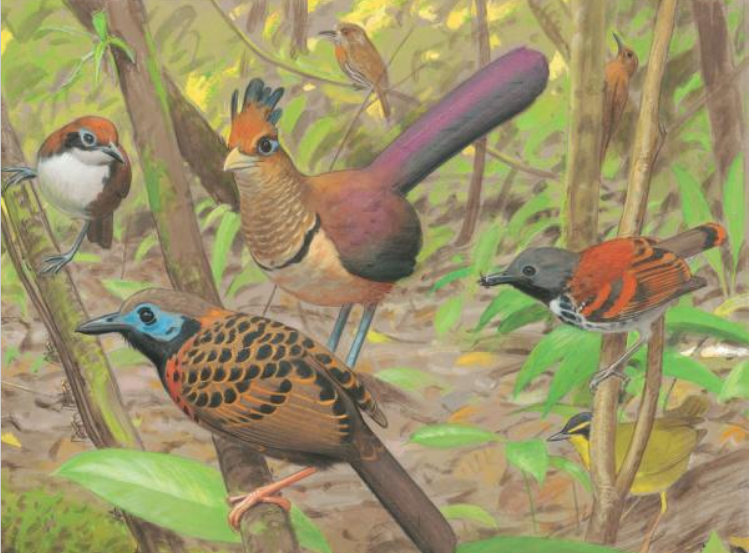
Belize, Guatemala, Honduras, El Salvador, Nicaragua, Costa Rica, and Panama make up Central America. Notice that had I not used the Oxford Comma there, you’d be thinking “Costa Rica and Panama” was a country like Trinidad and Tobago. Or Antigua and Barbuda. Or Bosnia and Herzegovina. Anyway, those countries have about 1261 species of birds, and the newly minted Birds of Central America: Belize, Guatemala, Honduras, El Salvador, Nicaragua, Costa Rica, and Panama (Princeton Field Guides) by Andrew Vallely and Dale Dyer covers 1,194 of them (plus 67 probably accidentals). Obviously, many (nearly all) of those birds exist outside that relatively small geographic area, up in to North America and down into South America. But I’ll remind you that there are some 10,000 bird species, so this region has a bird list that represents 10% of that diversity. Nothing to shake a beak at.
This is a classic Peterson/Petrides style guide, with the usual front matter about bird id, geography, habitats, etc. Species draswings are on the left leaf while descriptions and range maps on the left. The drawings do not have Peterson Pointer lines, but there are a lot of drawings to clarify regional versions and life history stages. In fact, the attention to regional variation is a notable and outstanding feature of this file guide.
There is also an extensive bibliography with over 600 references. The book is medium format, not pocket but not huge, and just shy of 600 pages long. Also, last time I clicked through it was on sale. Know somebody going to Central America over winter break? Get this for them as their holiday gift!
Like the Princeton guides tend to be, this is a very nice book, well written, well constructed, and likely to become the standard for that region for the near future.












Wonderful! I have paintings of some of the birds you show in the Central American guide. I’m working on a children’s book. Fun to see you beautiful pictures. Thank you.